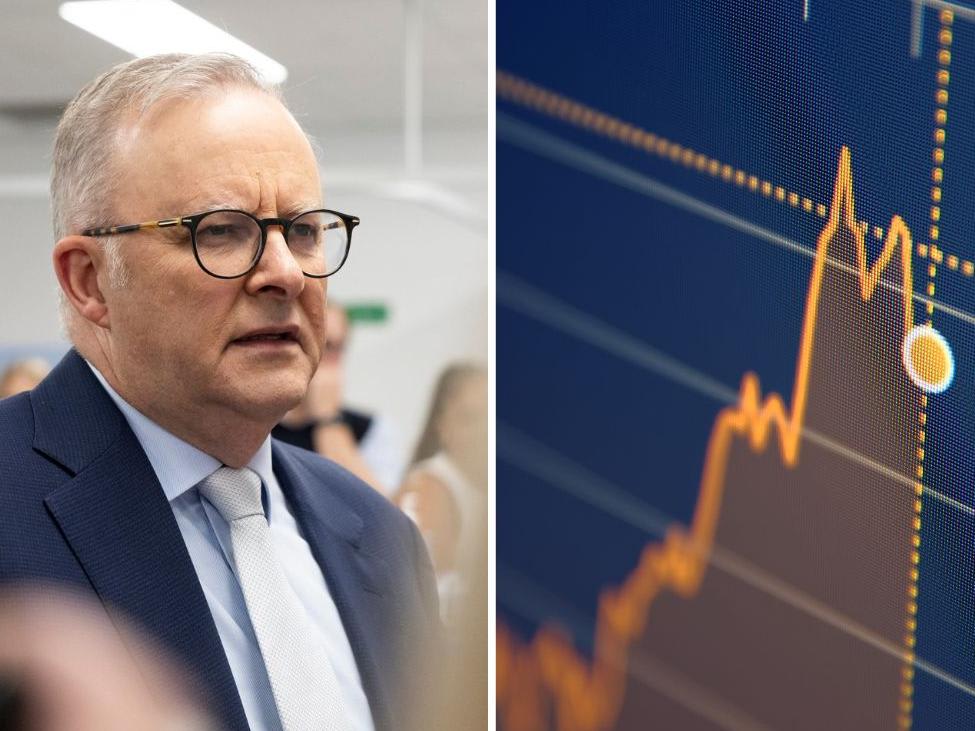Cost of living pressures and public anguish about higher interest rates have meant Prime Minister Anthony Albanese’s hopes of winning the next federal election could ride on one critical stat.
The Australian Bureau of Statistics is due to release its latest figures for trimmed mean inflation on Wednesday, widely expected to be the main influence on whether the RBA adjusts the cash rate.
Economists revealed that further signs of slowing inflation would open the door for a February rate cut, while inflation remaining stubbornly high would likely mean a rate hold.
It comes as new polling from Roy Morgan revealed cost of living and keeping interest rates down have become the most important issues for much of the electorate.
About 57 per cent of respondents said they considered “keeping day-to-day living costs down” as one of their top three issues. This made it by far the most common concern for voters.
Prime Minister Anthony Albanese said his government had done “all we can” to tame inflation. Picture: Getty Images
MORE: Homes offered ‘rent free’ in huge shift
“Keeping interest rates down” was a top three issue for 19 per cent of voters, up from 8 per cent in 2022 – higher than the proportion of voters who said immigration was a top issue (14 per cent).
Roy Morgan CEO Michelle Levine said how the ALP responded to these issues would be critical.
“The rising focus on cost-of-living pressures – spanning day-to-day expenses, interest rates, and housing affordability – reflects a growing urgency among voters to address financial strain, making it the defining issue of this election cycle,” she said.
“If the Albanese government fails to realign with these changing voter concerns, they may not be re-elected.”
MORE: Aussie home prices to struggle in 2025, surge in 2026
Markets are tipping RBA Governor Michele Bullock to announce a February cut. Picture: Monique Harmer
MORE: Best suburbs for home buyers in 2025
Markets are tipping the Wednesday data to show headline inflation for December to drop within the 2-3 per cent target range of the RBA, but the central bank’s preferred underlying inflation measure to stay high at 3.3 per cent.
Ray White Economics’ chief economist Nerida Conisbee said a higher than inspected inflation reading had the potential to “push back interest rate cuts”.
A new survey from comparison group Finder.com.au showed 38 per cent of homeowners were struggling to pay their mortgages.
About one in nine Aussies with a mortgage said they’d have to sell up or apply for hardship if interest rates stayed the same until May, the Finder research showed.
Housing affordability and interest rates will be a critical election issue, Roy Morgan polling shows. Picture Thomas Lisson
Mr Albanese told Sky News on Monday he believed his government had done “all we can” to reduce inflation and create a climate that could pave the way for the Reserve Bank to cut to the cash rate.
But he also clarified that he didn’t believe Labor’s chances of re-election hinged on a rate cut, noting that average unemployment was the “lowest of any government in the last 50 years”.
Speaking to reporters ahead of the inflation release, Treasurer Jim Chalmers shied away from pre-empting how the RBA would interpret the data.
“They will weigh up all of the data in our economy, the inflation numbers this week, the job numbers and other data, and they’ll come to a decision independently without any free advice from me,” he said.
“I’m focused on my job which is getting inflation down, getting wages up, keeping unemployment low, getting the budget in much better nick at the same time as we roll out this cost of living help.”


